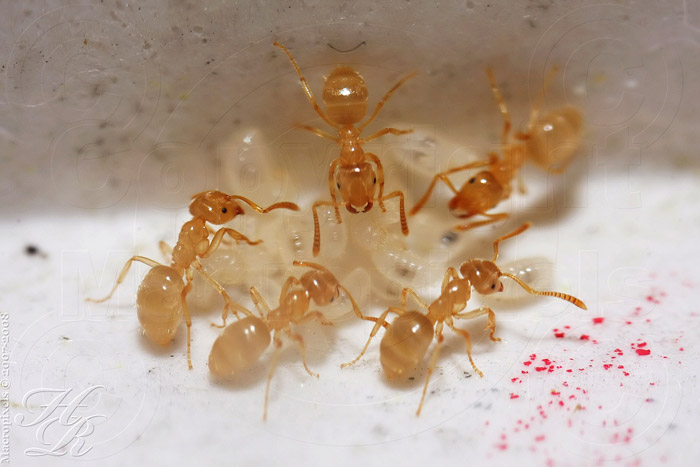 © Nick Relton
© Nick Relton
An introduction to yellow meadow ants
Yellow meadow ants are a very common in Europe.
They are often mistaken for the red stinging ant. This ant actually struggles to sting humans at all.
It is a relatively slow moving and shy ant species that avoids confrontation.
They tend to avoid sunlight and create intricate underground sand/soil structures.
Scientific names
Lasius flavus (featured), Lasius (flavus group).
Distribution
Yellow meadow ants are wide spread across central Europe, some parts of N. Africa, N. America and Asia.
Habitat
Yellow meadow ants are subterranean meaning that they mostly live in the safety and darkness underground. Their nest mounds are commonly seen on in lawns and pastures where they might be as large as a basketball they are typically covered in grass/vegetation.
Diet
Anything sweet. Seeds. Small insects that crawl into their nest. They occasionally farm under-ground coccids and aphids.
Colony size
Established yellow meadow ants can have colonies of around 5000 ants.
Queen
8mm, dark orange, mostly monogyn (one queen per colony).
Workers
2-5mm, orange, some have dark brown under gasters. Although yellow meadow ants don’t have major worker castes, there are some slightly larger workers than others; these could be referred to as median workers.
Pest info
Yellow meadow ants are harmless to us as they will struggle to bite or sting us. However they are frequently an annoyance to home owners with lawns as they up-turn soil to make their nests each year.
Pet info
This species is perfect for first time ant owners.
They are low maintenance, easy to find, tough, long lasting, clean, build fantastic soil/sand structure and are unable to bite or sting humans. However, the colonies can be slow to grow and they are very shy, especially the nantics.




